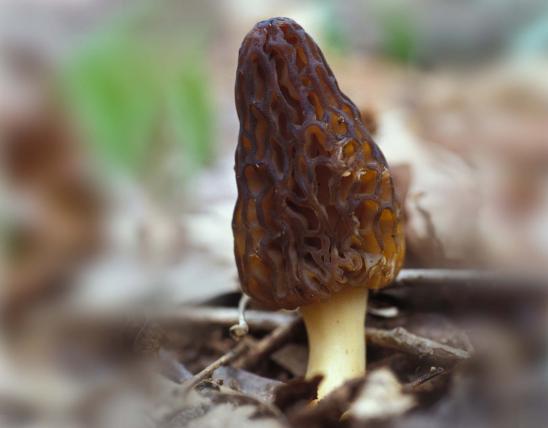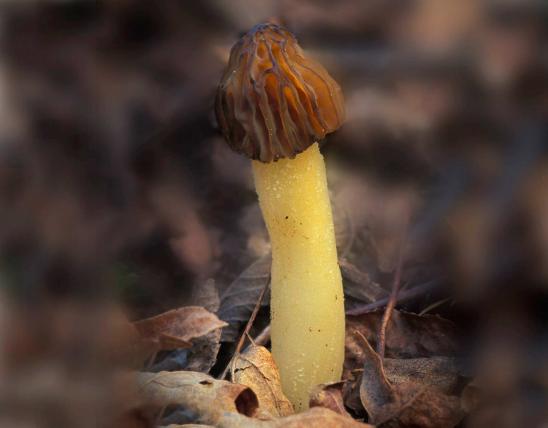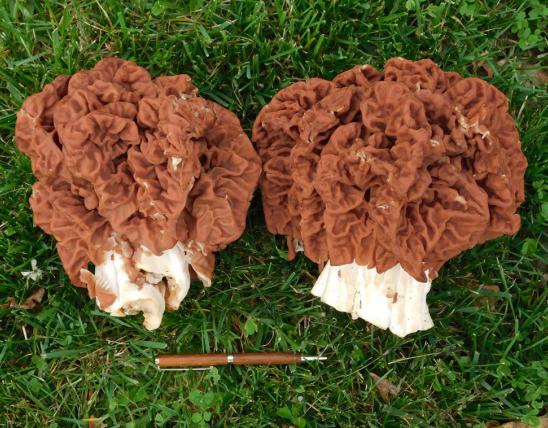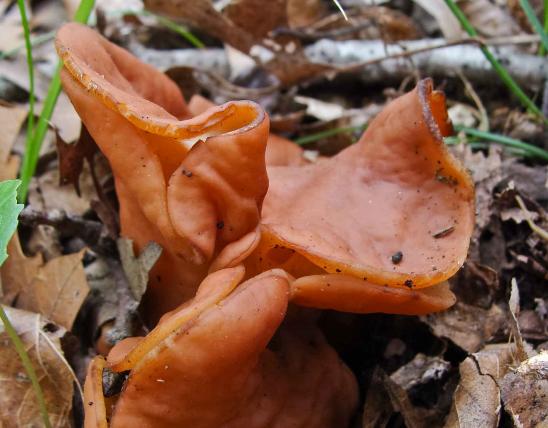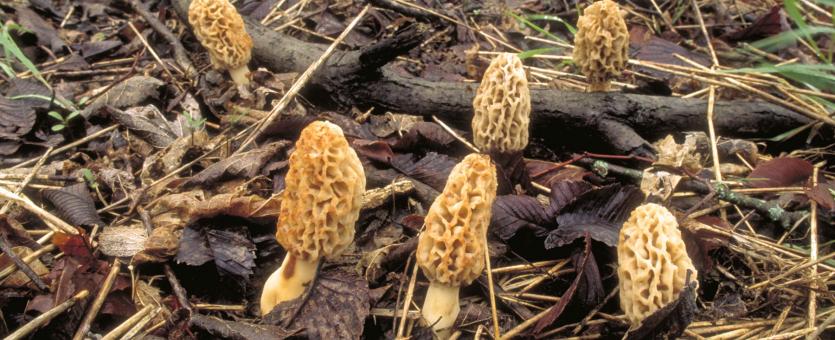
The yellow morel has a honeycombed cap with yellow to yellow-gray to yellow-brown ridges and pits; it is completely hollow. April and early May. The cap is oval to elongate, with randomly arranged and oriented ridges and pits; the ridges and pits are yellow to yellow-gray to yellow-brown; the cap is deeply pitted and hollow; the bottom of the cap is fused to the stalk. The stalk is sometimes enlarged at the base; whitish; ribbed; hollow. The spore print is creamy yellow to ocher-yellow. Spores magnified are elliptical, smooth. Spores are located inside the pits. The yellow morel can be small and grayish, but later in the season it can be very large, up to 12 inches high.
Lookalikes: The poisonous or potentially toxic false morels (Gyromitra caroliniana and G. brunnea) are reddish and have wrinkled, lobed, or brain-shaped caps and dense (not hollow) stalks. The bottom half of the cap of the half-free morel (M. punctipes) hangs free from the stalk. The cap of the black morel (M. angusticeps) has blackish or dark brown ridges and is more conical.
Cap width: 1½–3 inches; cap height: 2½–6 inches (cap is sometimes much larger); stalk length: 1–2 inches; stalk width: ½–2 inches.
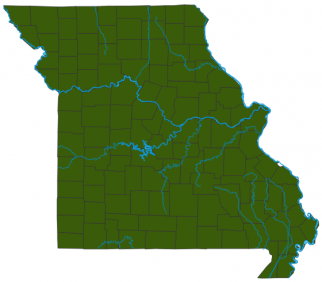
Statewide.
Habitat and Conservation
Grows singly or in groups of up to many on the ground in deciduous woods and in disturbed or recently burned areas. Found especially under dying elms and living white ashes and cottonwoods; also under tulip poplars, oaks, and hickories. American morels have recently been reclassified using DNA studies. The same species were thought to grow in both North America and Europe, but it turns out that is not the case. The name "Morchella esculenta" now only applies to European morels.
Status
Morels are choice edible mushrooms. They are delicious, and there are many recipes for them. It is traditional in Missouri to deep-fry them, but they are excellent sautéed in butter or creamed. If you find a lot, you can dry them for later. As with all wild mushrooms, always cook them; don't eat them raw. Clean them first by slicing them lengthwise and soaking them for a while in salted water. This should rid them of any insects.
Life Cycle
Morels exist most of the year as a network of cells (mycelium) penetrating the soil. When conditions are right, the mycelium develops mushrooms, which produce spores that begin new mycelia elsewhere. Morels can sometimes be seen “smoking” from the mass release of spores. For at least part of their life cycle, morels are saprobes, consuming decaying materials such as dead leaves or wood. They are also mycorrhizal, connecting to tree roots in a relationship benefiting both tree and fungus.
Human Connections
Morels are a favorite of mushroom hunters. For most people, morels are what come to mind when they hear the phrase "mushroom hunting." Morels are treasured for their delicious flavor and the fun of the hunt, which is often a family tradition spanning generations.
Ecosystem Connections
Below ground, morels form symbiotic relationships with the roots of living trees, helping them get nutrients. As saprophytes, morels decompose dead leaves and wood, helping return nutrients to the soil.
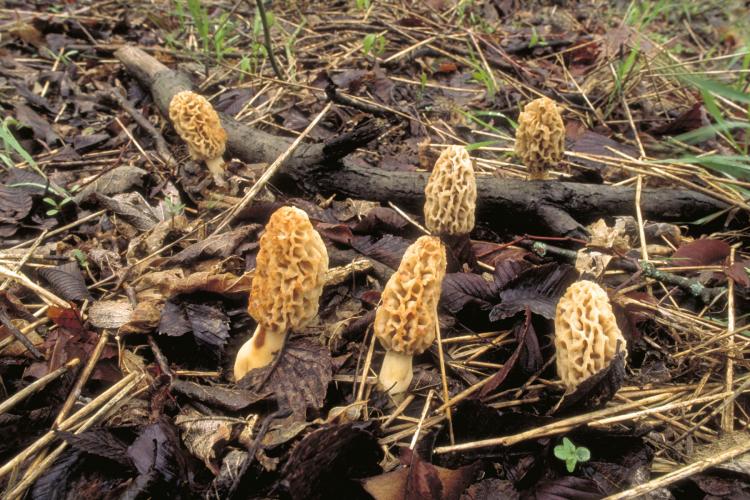

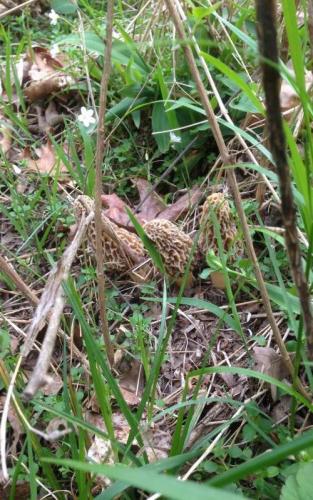
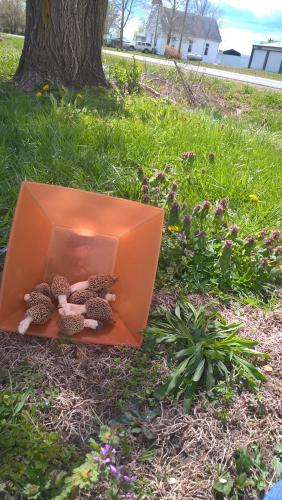
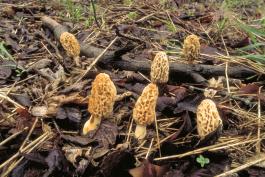


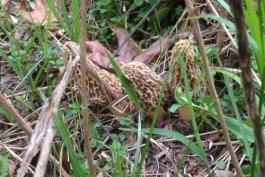

Mushrooms are a lot like plants, but they lack chlorophyll and have to take nutrients from other materials. Mushrooms are neither plants nor animals. They are in a different kingdom — the fungi. Fungi include the familiar mushroom-forming species, plus the yeasts, molds, smuts, and rusts.
Always be cautious when eating edible mushrooms. Be absolutely sure of the ID, and only eat a small amount the first time you try it to avoid a reaction..























